Elephants are one of the world’s most magnificent animals because of both their size and their intelligence. Elephants are the heaviest land mammals that walk the Earth today.
This page contains a huge variety of weird and amazing facts about elephant, including explanations of the differences between elephants species, what elephants eat, and how an elephant’s brain and senses work.
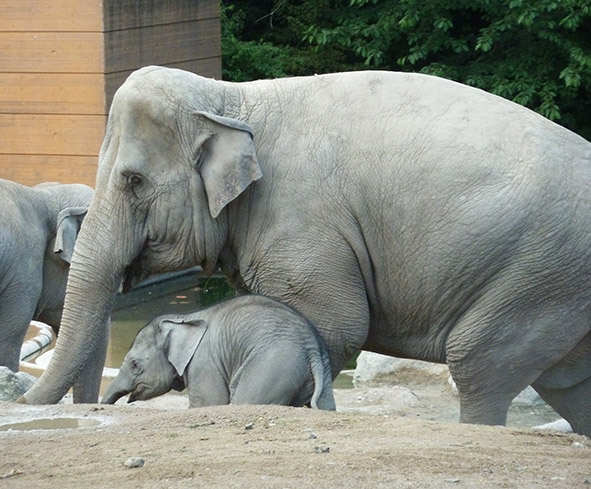
The pictures and facts here are perfect for use in a school project on elephants. It may surprise you to learn how much elephants have in common with humans!
You can use this page Elephant Facts together with the page Elephant Pictures, where you will find lots of beautiful pictures of Indian elephants and African elephants, and the page Elephant Clip art, with elephant drawings and elephant images.
Basic Facts About the Elephant
Let’s start by answering some of the most basic questions about elephants.
Elephant Facts, #1: How long do elephants usually live? Average lifespan for an elephant is around 65 years
Elephant Facts, #2: How tall are elephants? Male elephants can grow to around 11-13 feet tall (about 3.3-4 meters)
Elephant Facts, #3: How much do elephants weigh? Usually between 7,000 and 13,000 pounds (that’s between about 3200 and 6000 kilograms, or roughly 3 to 6 metric tons)
Elephant Trunk Facts
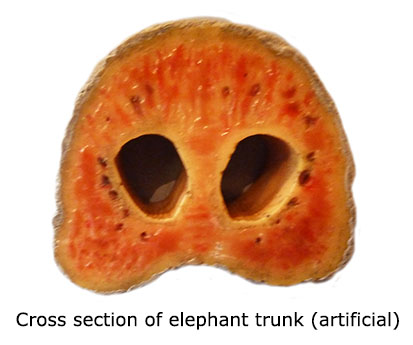
One of the most unique features of the elephant is the trunk.
The elephant’s trunk is ‘prehensile’ – which means it’s full of muscles, around 150,000 muscle units, which allow the elephant to control the trunk quite precisely and use it to pick things up, the same way a monkey can use its tail to hold onto a branch. The elephant’s trunk is one of the most sensitive organs found in any mammal.
The elephant doesn’t drink with the trunk, but with the mouth. It uses the trunk to feed the water to the mouth. The trunk can also be used as a “snorkel” when the elephant is under water.
Elephant Tusks
The elephant’s beautiful tusks are what have made it such a common target for poachers. Ivory has been used over the years for a wide number of products – even piano keys.
The elephant uses its tusks for a few different purposes.
Obviously, they can be used as weapons to defend themselves against attacks from predators, as well as being used to fight off attacks from other elephants.
But there are other uses you might not have expected for tusks… like acting as a trunk-rest!
Yes, elephants do need to rest their trunks from time to time, and sometimes they do that by draping the trunk over a tusk. This may sound strange, but remember the trunk is full of muscles so it does get tired at times.
Elephants also use their tusks to knock down trees.
If an elephant finds a tree with edible leaves that are too high to reach with its trunk, it will use its tusks to try and ram the tree until it tilts or falls right over. (An elephant can also use its trunk to pull a branch off a tree, to make it easier to eat the leaves).
The elephant’s beautiful tusks are enlarged teeth , and they appear when the elephant is around 2 years. After that they continue to grow throughout the elephants life.
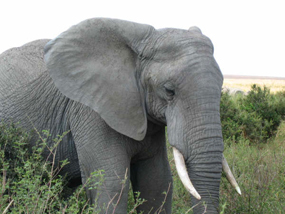
There’s a common saying about having a “memory like an elephant” – used to describe someone who never forgets.
The elephant’s amazing memory is just one example of the impressive brain this animal has.
Of course, the idea that “elephants never forget” is not exactly true, but scientists observing elephants have found that they do indeed have incredible long term memories for things like the location of watering holes and food sources.
As well as being the largest land mammal alive today, elephants have the biggest brains of any mammal by mass, with an adult elephant brain weighing on average around 10.5 pounds (4.7 kilograms). The human brain, by comparison, weighs about 3 pounds or 1.3 kilograms.
Elephants also have an excellent sense of smell
Elephant Facts: Elephant Behavior
Elephants, like humans and many other mammals, are social animals. They move together in herds and they have a complex social structure that rules their behavior.
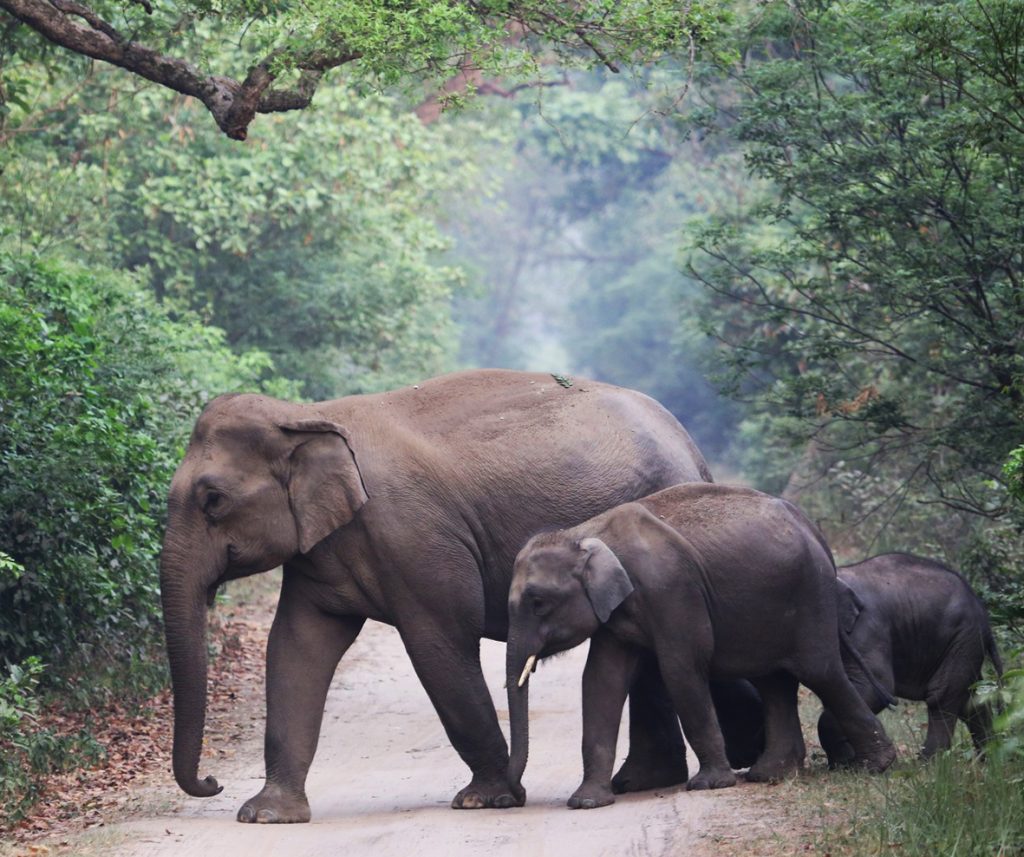
They also show signs of complex emotions, being inclined to touching one another, rubbing their bodies together and ‘holding hands’ with their trunks.
Elephants also have some interesting behavior when it comes to raising their young.
Baby elephants aren’t only fed by their mother – sometimes they’ll be nursed by another female elephant in the herd or by more than one other elephant.
Like humans, elephants need a lot of time to learn the life skills they need to be independent of their parents (unlike many birds, for instance, who are ‘on their own’ as soon as they hatch).
A young elephant usually won’t be fully weaned from its mother until around 4-5 years of age.
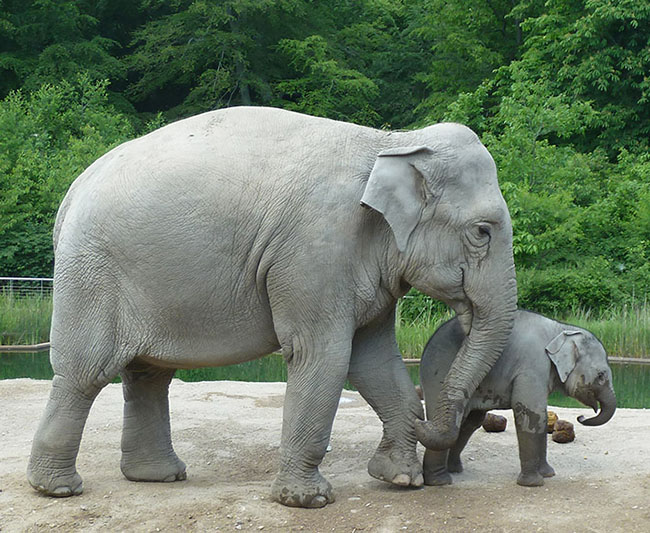
Each herd of elephants is usually led by an older female, with a few tight family groups making up the herd.
They communicate with each other mainly through low-pitched noises, and even with a low-frequency hum that the human ear cannot capture.
This is one thing elephants seem to have in common with whales – just as every individual whale has its own distinct call or song, each elephant can be recognized by its own individual ‘voice.’
Their ability to hear these sounds allows them to communicate with each other over distances of up to six miles.
Elephant researchers have also taken note of the elephant’s interesting behavior when it comes to looking after the old and sick within a herd.
Elephants look after and protect their most vulnerable herd members and even appear to mourn their loss when one of their herd members dies.
Elephants have even been known to use their trunks to help pull other elephants out of mud.
Elephants are very smart and very social creatures. Studies of elephants have even shown a strange tendency to pick up and hold the tusks of dead elephants they find. No one has yet managed to figure out why they do this.
Elephants even appear to have their own rituals for greeting each other.
This is particularly true for greeting other elephants they haven’t seen for some time – which illustrates again the power of the elephant’s memory.
Another odd elephant behavior which is often seen is the way elephants will wave their trunks around, held high in the air. This helps them use their excellent sense of smell to pick up scents over even longer distances.
Elephant Habitat Facts
The typical elephant habitat includes access to plenty of fresh water as well as plenty of grass for grazing. Being such huge animals, elephants need a plentiful food supply.
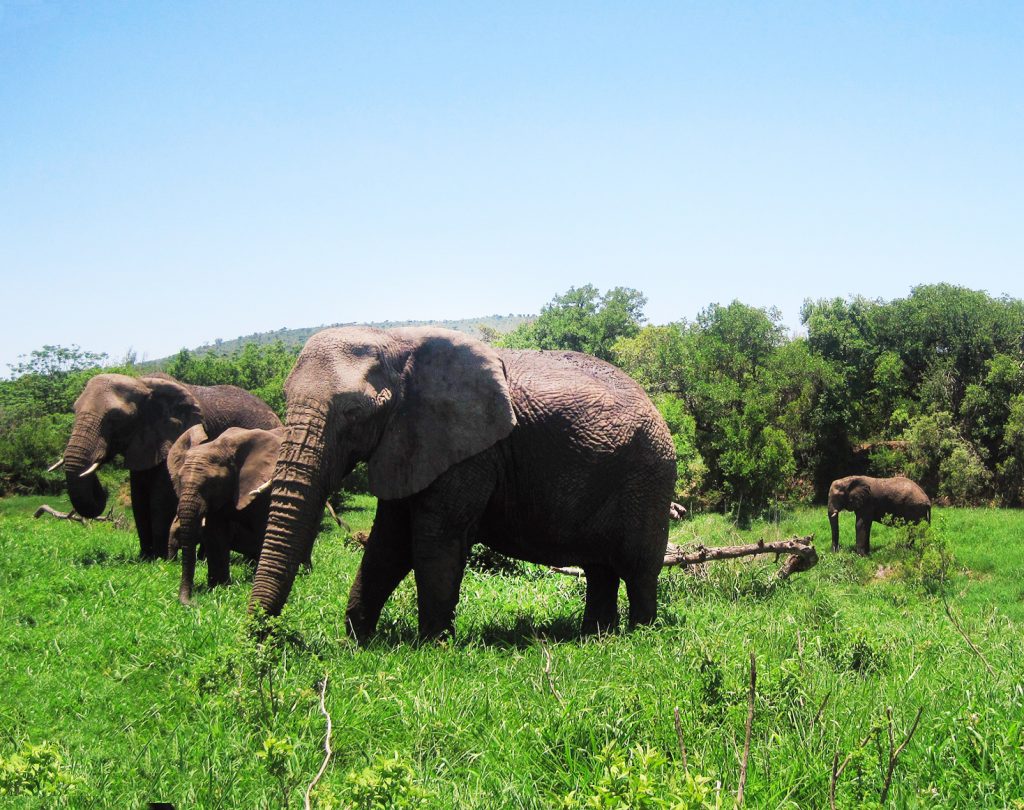
They’re highly adaptable animals capable of living in a range of different environments – their ability to survive in the Sahara Desert is a testament to that.
They survive in the desert by memorizing the locations of various watering holes and food sources, and trekking between them.
But for the most part, elephants stick to jungles, grasslands and the savanna where water and vegetation is most plentiful. The savanna is the region between the grasslands and the desert.
The habitat of the elephant differs along with the regions in the world where they are found. In Africa, the elephant lives both in the bush and in the forest (some people classify these as two different species, as explained below).
In Asia and India, elephants live primarily in jungle and tropical forest areas although some are found in highly-elevated, mountainous regions such as the Himalayas.
Elephant herds are capable of migrating long distance to find ‘greener pastures’ when the dry season sets in. Some elephant herds have been observed making migrations of over 65 miles (over 100 kilometers – a long way to walk!).
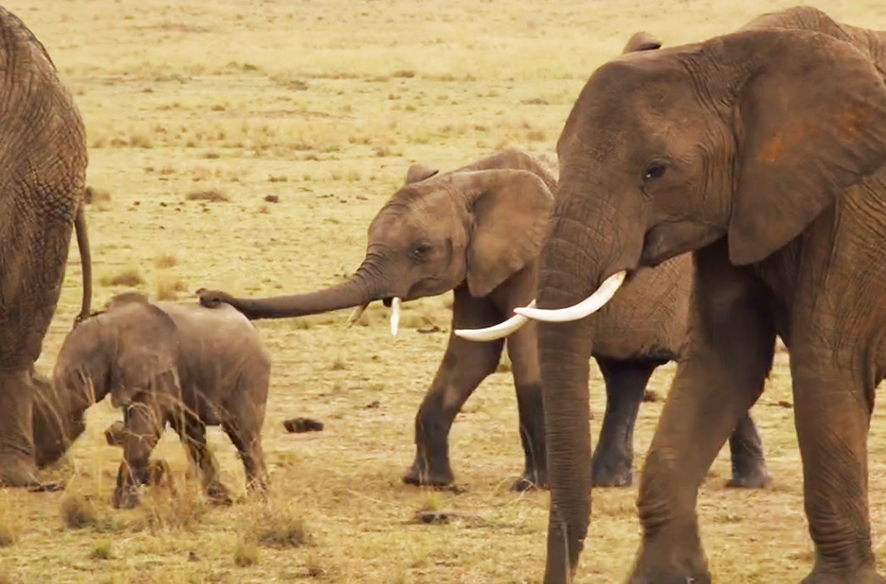
Habitat destruction by human activities like logging have been a huge problem for these animals for many decades.
How Many Elephant Species Are There?
The answer to this question depends who you’re asking, as there’s a bit of a disagreement between some scientists about how many species there are.
There are three main types of elephants: the African forest elephant, the African bush elephant and the Indian elephant (also called the Asian elephant).
Naturally some people classify the two African types as being the same, which is why the answer to the question of how many living species of elephant there are is usually given as two.
While many people still refer to the ‘African elephant’ in general, there has now been a genetic study done which proved the African bush elephant and the African forest elephant are genetically different enough to be different species.
So technically there are three elephant species, but the two African species are so similar they are very hard to tell apart.
You may also hear reference to the Sumatran elephant and the Sri Lankan elephant.
While elephants are found in these regions, they are technically the same species as the Indian or Asian elephant found throughout India, China and the Himalayas.
African Elephants vs Indian Elephants – What’s the Difference?
There’s a lot more to separate the Indian and African elephants than just where they live.
Here are a few of the major differences between the two elephant types:
-The African elephant is bigger, with adult males growing up to around 4 meters tall (about 13 feet). Indian elephants on the other hand only grow to around 3.5 meters tops.
-The African elehant has two “fingers” on the tip of their trunk, whereas the Asian elephant has one “finger”
-The Asian elephant has a slightly humped back, which is the highest point of their body, the African elephant has the highest point at the shoulder.
-The actual appearance of the two elephant types is also different. African elephants have more wrinkly skin and bigger ears. Indian elephants have longer bottom lips and a different head shape: Indian elephants have a double-dome shaped skull while African elephant have a single dome.
-The difference in ear size is believed to be a result of the different climates the two elephants live in, with large ears being useful for flapping to cool the African elephant down in the dry heat of Africa
Not all elephants develop visible tusks; in the Asian species most female and some male elephants have small tusks, called tushes, which seldom protrude more than an inch or two from the lip line. Only some of the male Asian elephants have large, prominent tusks.
And then some differences that are not so easily recognized:
-African elephants tend to have more ribs than Indian elephants. I say ‘tend to’ because the exact number of ribs is not always the same between each elephant, but the typical African elephant has 42 ribs whereas the typical Indian elephant has only 40.
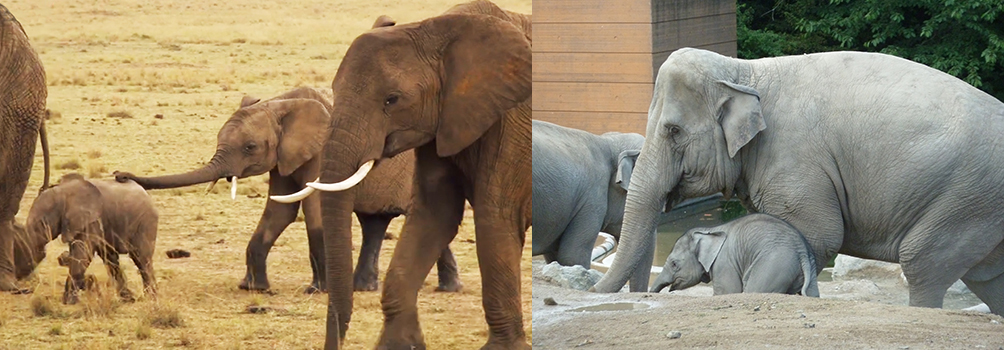
-African elephants are also heavier, outweighing the Indian elephant by a good 2200-3300 pounds (1000-1500 kilograms) on average.
Elephant Facts: How Many Elephants Are Left?
At the moment, there are still roughly 500,000 African elephants roaming the grasslands and the Savannah.
This is a large enough number for them to sustain their population quite easily, but the risk of poachers is always present.
In Asia, the situation for elephants is much more gloomy.
It’s estimated that there are now only about 30,000 Indian elephants left in the wild, possibly a lot less than that.
The elephants on the island of Borneo in Indonesia are in grave danger of disappearing, with only roughly 1000 elephants still living on the island.
What Do Elephants Eat?
Elephants are herbivores – in other words, they don’t eat any meat, only vegetation.
That vegetation is usually grass, although elephants are also capable of eating and digesting a wide variety of leaves and other plant life.
Elephants drink a lot. How much is a lot? Well, in a typical day a fully grown elephant will drink between 35 and 50 gallons of water – about 130 to 190 liters!
So now you understand why its so important for elephants to remember exactly where the best water sources are.
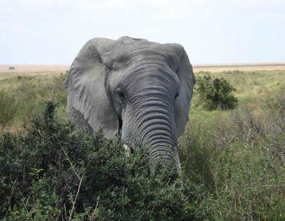
Elephants also tend to eat roughly 5% of their body weight each day.
When you consider that an elephant can weigh up to 6 and a half metric tons, that amounts to a lot of grass!
An elephant that weighs 10,000 pounds will eat, on average, about 500 pounds (about 230 kilograms) every single day! The largest males will eat even more than that.
Contrary to what many people think, elephants don’t actually ‘drink’ through their trunk like it’s some kind of giant straw. They have to drink through their mouths.
So they use the muscles in their trunk to suck water up into it – then they pour the water into their own mouths.
Elephant Enemies
Because of their enormous size, elephants have few natural predators.
In fact, it may interest you to learn that technically the African elephant is classified as having no natural predators.
Because these elephants are so large, very few animals make a deliberate attempt to hunt them while they’re alive (although scavenging animals like hyenas feed on elephants that have already died).
But even elephants can become a target for some of the world’s most famous predators: the big cats, especially lions, have been known to take down elephants occasionally. Because lions hunt in packs, they are able to use numbers to overwhelm a sick or weak elephant.
Usually predators target baby elephants because they’re a lot slower and less able to protect themselves than adults, but the herd protection instinct always kicks in when elephants are under attack – adult elephants will put themselves in harm’s way to defend their young from attacking lions.
Other big cats, like leopards, have been known to attack young elephants – but this is very uncommon.
Leopards are not pack hunters, so they don’t have the advantage of numbers that lions use to take on elephants. This makes it extremely risky for a leopard to try and attack an elephant.
However, a young elephant which has been separated from its herd can become a target for a leopard, or even for a pack of hyenas. Again, hyenas won’t usually risk trying to attack a full elephant herd because of the high chance of getting injured by an adult elephant.
But unfortunately, the biggest threat to elephants is the human species itself.
Poachers have long been a big reason for the decline in elephant numbers, along with the destruction of native elephant habitat.
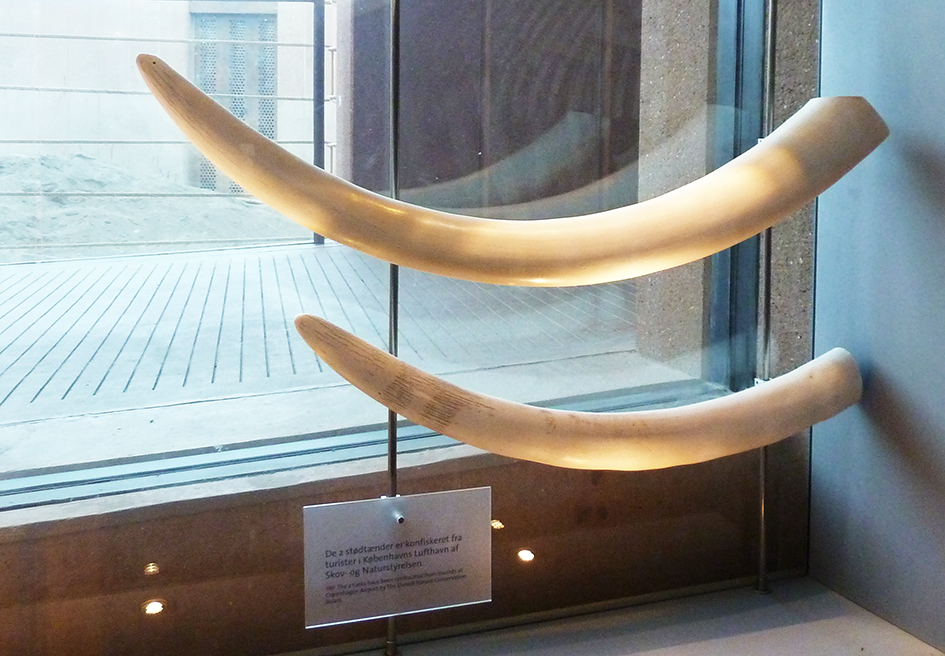
The problem has become so bad that there are actually very few elephants these days living outside of parks protected by law and policed by wildlife rangers to stop poachers.
There are many reasons elephants have been hunted so much over the years.
They have been a source of food for local African people for a long time – the ability to use weapons for hunting has made humans the biggest threat to the elephant because it has let people overcome the size difference and attack from a distance.
Ivory from the elephant’s tusks has been another big reason for hunting, white ivory being nicknamed ‘white gold’ because of its extremely high value.
Sadly, there are still even people who hunt elephants just for sport, without any real reason.
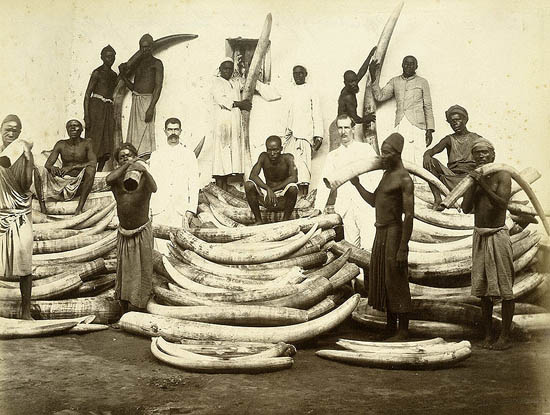
Male and Female Elephants
As I already mentioned, it’s actually female elephants who lead the herd. A male adult elephant is called a ‘bull’ and an adult female is called a ‘cow.’ The female who leads the herd is called the ‘matriarch.’
Elephants do not give birth to a ‘litter’ of offspring like other mammals such as cats and dogs.
Like humans, in the majority of cases females will only give birth to one calf at a time. In some cases elephant twins are known to occur, but these are quite rare.
Male elephants lead quite different social lives from females. While the female elephants spend their entire lives very much focused on the herd, males become more and more solitary as they grow older.
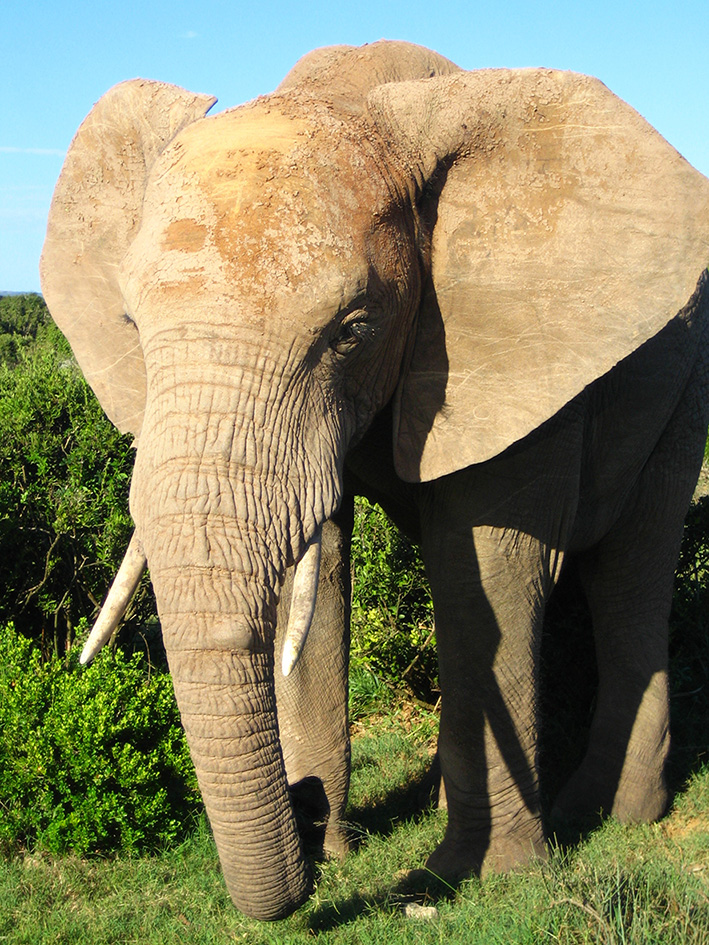
At around 14 or 15 years of age a bull elephant will leave his herd altogether.
Older males then live out the rest of their lives moving between herds to mate when they have a chance.
Occasionally a ‘bachelor herd’ of two or more males will form.
Females also tend to be less aggressive with each other than males do. As with a normal elephant herd, these all-male bachelor herds have a hierarchy and are led by the most dominant male in the group, who is often the oldest.
For the most part male herds stay fairly small, between 2 and 15 in number – but there have been recorded cases of over 100 elephant bulls together in a single herd.
The Woolly Mammoth (not an Elephant!)
Scientists who have studied fossils from around the world have put together a fascinating picture of the huge variety of elephants and elephant relatives that used to wander the earth.
The Woolly Mammoth is the most famous of these, which died out in most past of the world during the last Ice Age around 10,000 years ago – although living Woolly Mammoths still roamed an island near Siberia as recently as 4,000 years ago.
The name ‘mammoth’ is a little bit misleading – most people think these mammals were a lot larger than the elephants we see today.
This is not actually true – the average Woolly Mammoth was only about 9 feet tall, making it shorter than both the African and Indian elephants of today.
There’s another mistaken idea out there that our elephants evolved from the Woolly Mammoth. Again, this isn’t true – both our modern elephants and the Woolly Mammoth evolved from the same ancestor somewhere in the past.
Today’s elephants simply survived into modern times because they live close to the equator, so they weren’t affected as much by the sudden temperature changes in the Ice Age as the Woolly Mammoth, which lived in cold northern areas like Siberia.
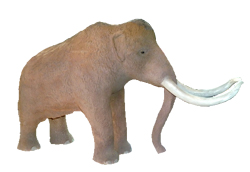
Now, I mentioned the Woolly Mammoth wasn’t bigger than today’s elephants, but here’s something else many people don’t know: there was more than one type of Mammoth wandering the Earth until not that long ago.
One of these was the River Mammoth of China, which weighed in at around 15 metric tons – that’s about 33,000 pounds!
Here’s another fun fact about Woolly Mammoths: unlike elephants, they had a lump of fat just behind their heads so they could store energy for times when no food was available. This was like the humps we see on the backs of camels today, which help camels survive in the desert.
One of the most interesting things about the Woolly Mammoths was the size of their tusks. Some Woolly Mammoth fossils have been discovered with tusks up to 15 feet long.
But scientists who have gone even further back in the fossil records have found some even more fascinating and surprising facts. For example, it’s been discovered the the elephant and one of the world’s most bizarre underwater mammals, the dugong, share a common ancestor.
More Fun Elephants Facts
#1: An elephant’s tusks never stop growing.
#2: Elephants eat so much they barely have time for anything else – even sleeping. They spend up to 18 hours each day eating and looking for their next meal.
#3: Female elephants are capable of having babies up to about fifty years of age, having a baby every 5th year.
#4: The trunk is actually a nose and top lip fused together and can grow up to 7 feet (2 meters) long on African elephants.
#5: As well as using their trunks to pick things up, show affection and drink, they also use them to keep themselves cool by spraying a jet of water into the air over their heads.
#6: Elephants are very good swimmers, and they can even breathe with their heads underwater by holding the tip of their trunks up.
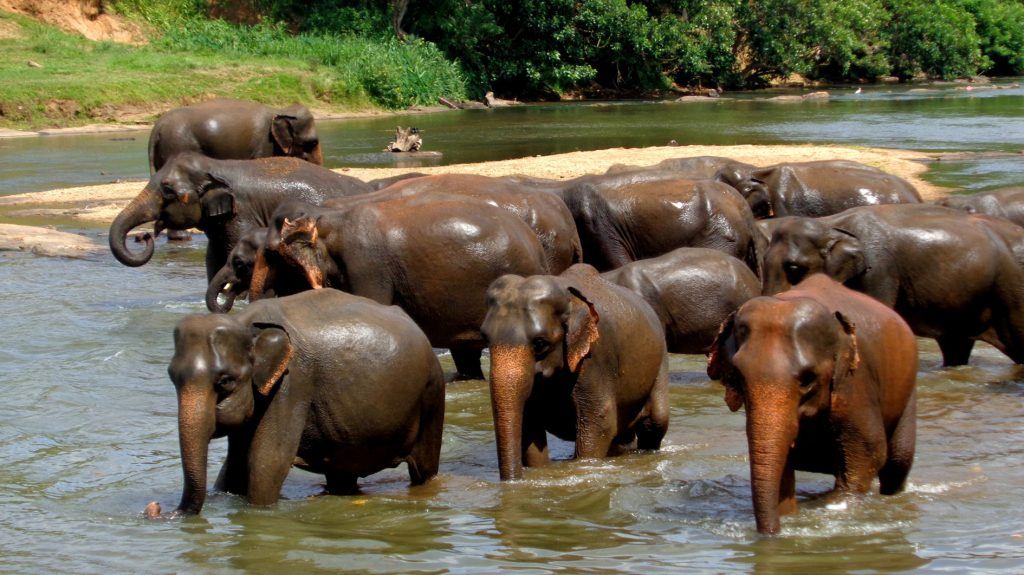
Go to the top of this page Elephant Facts and Information.
I can recommend some other sites and pages about animals:
Some of the pictures on this page are from Wikimedia.commons, and they are all public domain.
Some of the pictures are from the website Clipartqueen.com
Go to Homepage.